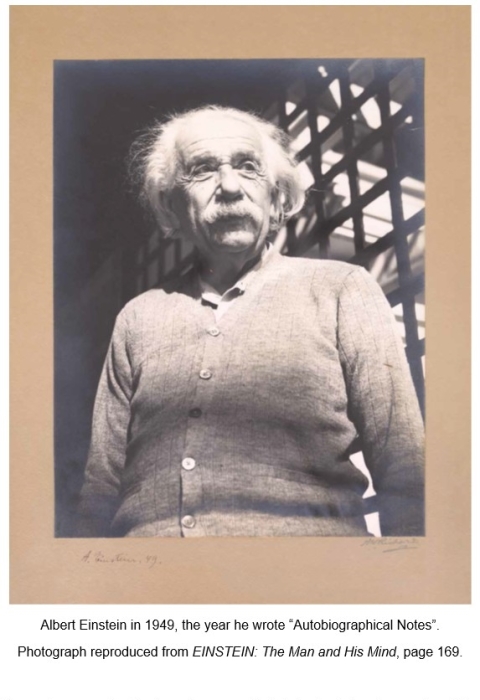Albert Einstein wrote several reflective pieces on the pathways that led to his theories, including his seminal works on the theory of relativity. Einstein discusses this journey most thoroughly in the essay “Autobiographical Notes”, published in 1949 in Albert Einstein: Philosopher-Scientist. This book is a collection of essays by Einstein and other contributors that critically examine his work.
In his autobiographical notes, Einstein presents a personal account of his life and intellectual development, beginning with his early life and extending through his major scientific achievements. Einstein’s essay offers insights into the cognitive processes, philosophical principles, and the unyielding curiosity that drove his lifelong journey in physics. Shedding light on the genesis of his theories and his philosophical views, “Autobiographical Notes” is a window into the mind of one of the most influential physicists ever.
Early Intellectual Curiosity
Einstein starts by describing his early life in a non-religious Jewish family and his education. He shares that his interest in science was sparked not by rote learning at school but through private reading and experiments. A pivotal moment came when he was gifted a compass, and he became fascinated by the invisible forces that directed its needle—a theme that would dominate his later work.
Academic Challenges and Initial Discoveries
Einstein reflects on his time at the Zurich Polytechnic, where he studied to become a teacher of physics and mathematics. Despite his later fame, Einstein struggled with some academic subjects and often clashed with the teaching styles of his professors. His isolation from the traditional academic routes allowed him intellectual freedom, which he regarded as crucial for his later theoretical developments.
The Miracle Year and Theories of Relativity
The essay then moves to his “miracle year” of 1905, when he published four groundbreaking papers in Annalen der Physik while working at the Swiss Patent Office in Bern. These papers were on the photoelectric effect (which later earned him the Nobel Prize), Brownian motion, the special theory of relativity, and the mass-energy equivalence formula E=mc2.
Einstein explains how the problems of synchronizing time for observers in different locations led him to develop the special theory of relativity. He describes how this theory abolished the traditional notions of absolute time and space, replacing them with spacetime, which is relative to the observer’s motion.
General Theory of Relativity
The narrative progresses to his development of the general theory of relativity, which he completed in 1915. This theory extended the principles of relativity to non-inertial (accelerating) frames of reference, introducing a new theory of gravity. Instead of viewing gravity as a force, Einstein conceived it as the curvature of spacetime caused by mass and energy.
Philosophical and Methodological Insights
Throughout the essay, Einstein emphasizes his philosophical approach to physics. He discusses his reliance on thought experiments, which helped clarify his theories. Einstein notes his adherence to simplicity and skepticism of complex hypotheses lacking empirical evidence.
Einstein also discusses the influences on his thought, citing figures such as Ernst Mach and David Hume, who shaped his ideas on empiricism and skepticism towards absolute space, time, and motion. He remarks on the importance of creative independence in his thought processes, suggesting that his early detachment from academia may have facilitated his original thinking.
Reflections on Later Work and Legacy
Towards the end of the essay, Einstein reflects on his later work, including his attempts to formulate a unified field theory, which he did not complete. He also touches on his political and philosophical views, including his advocacy for socialism and global peace, shaped by the turbulent times in which he lived.
Summary
Albert Einstein’s approach to physics was deeply philosophical, intertwining empirical evidence with a firm reliance on theoretical constructs driven by principles of simplicity, realism, and unity. His legacy in the philosophical landscape of science remains profound, as his theories continue to influence the trajectory of physical sciences and the foundational discussions in the philosophy of science.
___________________
Note: The images printed in EINSTEIN: The Man and His Mind are exact copies of the original photos. The images are printed on photographic quality paper that is spot varnished. This technique reproduces the originals as accurately as possible. The exceptional quality control adhered to by the publisher is an essential feature of the book. It permits the reader to share the experience as if viewing the actual photographs in this private collection.
Learn more about EINSTEIN: The Man And His Mind.

